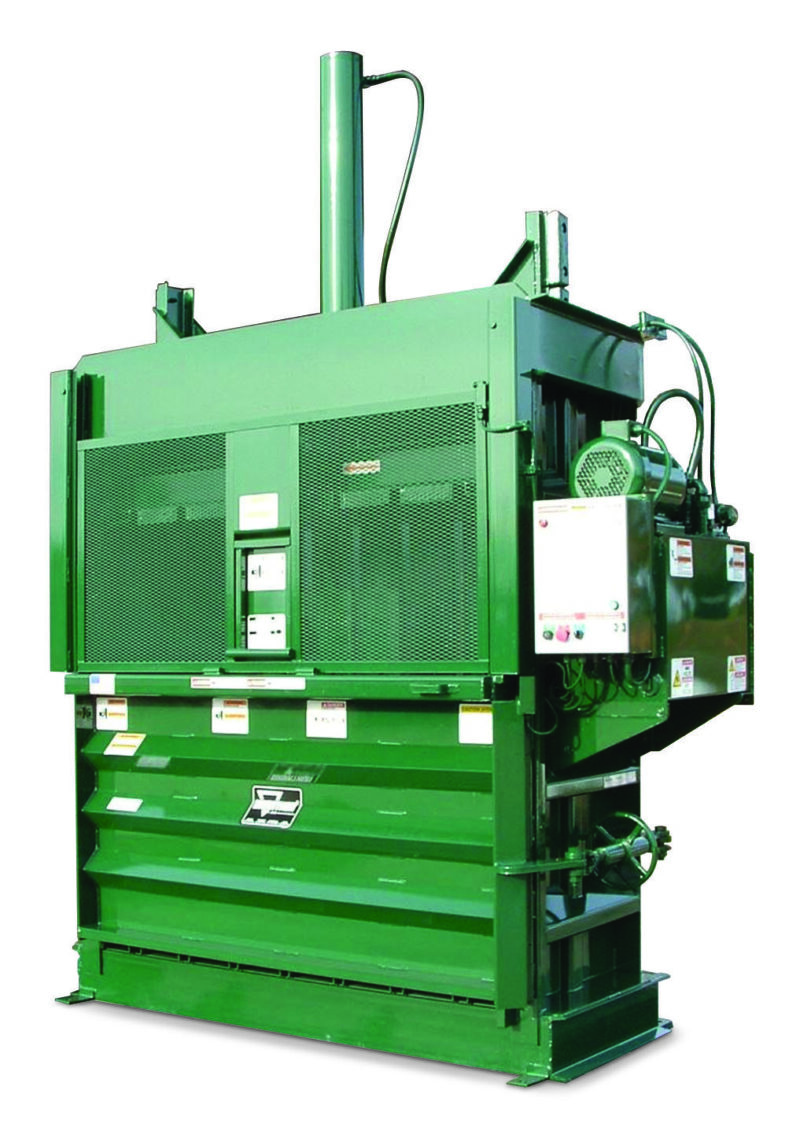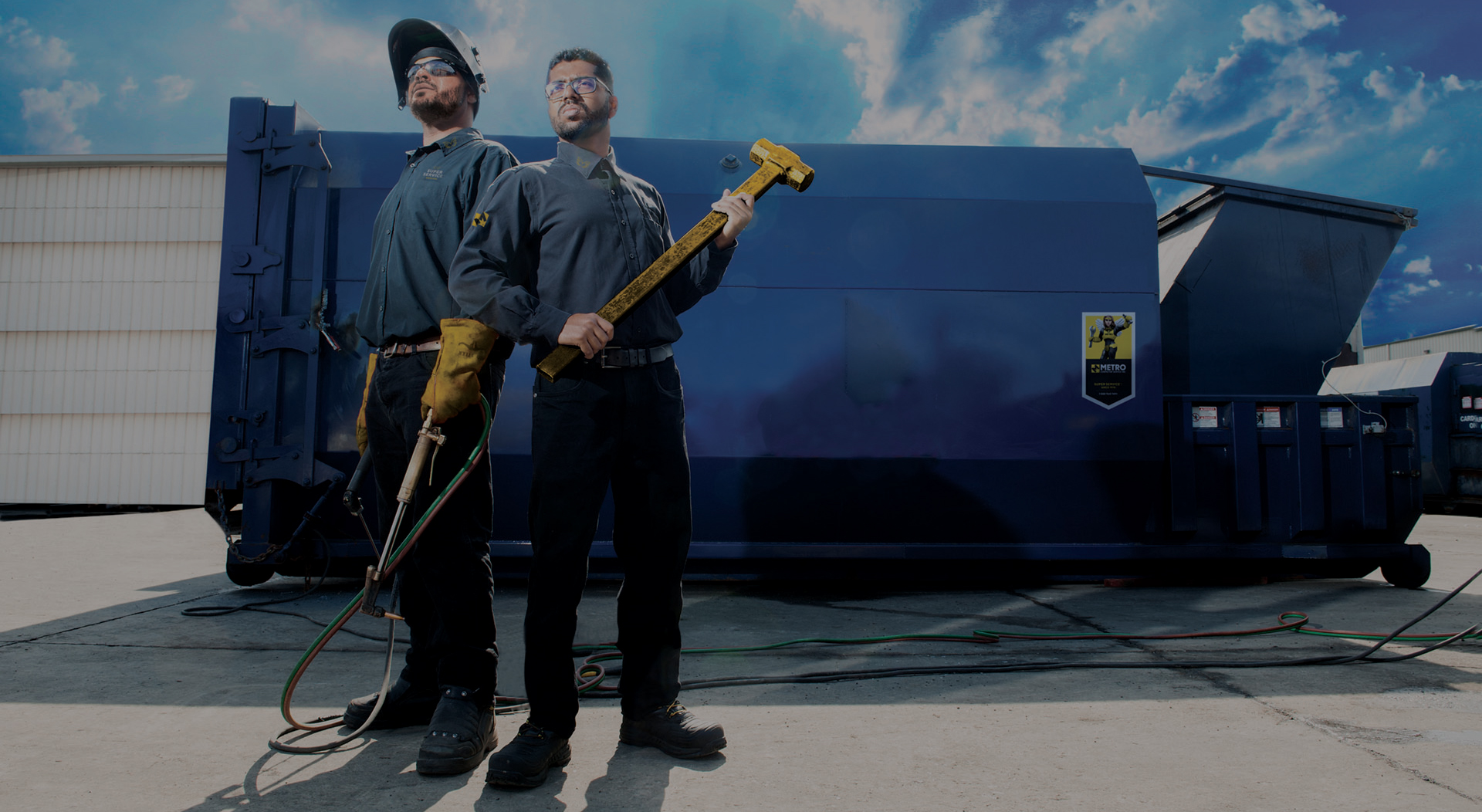Rent a Baler Today and Simplify Your Garbage Disposal
Rent a Baler Today and Simplify Your Garbage Disposal
Blog Article
Exploring the Essential Duty of Waste Devices in Modern Recycling Processes and Sustainable Waste Disposal Practices
The important duty of waste devices in modern-day reusing procedures underscores its value in accomplishing lasting waste disposal methods. Advanced systems, such as automated arranging modern technologies and compactors, not only enhance efficiency but likewise play a critical function in decreasing contamination prices and improving material healing. As the demand for even more lasting remedies grows, it is important to take a look at exactly how these modern technologies adapt to advancing obstacles within waste administration. What cutting-edge innovations are on the horizon that could even more change these procedures?
Significance of Waste Equipment
Why is waste tools critical in the reusing process? By promoting the splitting up of products, waste tools minimizes contamination, which is paramount in making sure premium recyclables that can be reestablished into manufacturing cycles.
Additionally, waste equipment enhances functional effectiveness and safety within recycling centers. Advanced equipment, such as shredders and balers, allows for the fast processing of big volumes of waste, lowering labor prices and processing time. Additionally, using customized tools decreases the risk of injury amongst workers by automating unsafe tasks.
Moreover, the ecological impact of recycling is magnified by efficient waste tools. By optimizing the recycling process, facilities can substantially lower the quantity of waste sent to garbage dumps, thereby adding to sustainability initiatives. To conclude, waste tools is not just a supplementary part of reusing; it is a basic facet that drives efficiency, security, and environmental stewardship in contemporary waste monitoring practices.
Kinds Of Waste Tools
The effectiveness of reusing operations is carefully linked to the details kinds of waste devices used at the same time. baler rental. Various classifications of devices are indispensable to the collection, sorting, processing, and transportation of recyclable products
To start with, collection tools, such as waste collection trucks and bins, is vital for gathering recyclables from numerous sources, including residential, industrial, and commercial places. As soon as accumulated, sorting equipment, including conveyor belts, shredders, and magnetic separators, plays an essential function in identifying different material types, making certain that pollutants are eliminated before handling.
Processing equipment, such as balers and compactors, better prepares products for reusing by pressing and packaging them into manageable dimensions. This not just optimizes space but also enhances transportation performance. Furthermore, specialized equipment like granulators and extruders is utilized for transforming products into recyclable kinds, particularly in plastic recycling.

Function in Recycling Processes
In reusing processes, the duty of waste devices is crucial in ensuring performance and efficiency at every phase. This devices encompasses a variety of equipment made to manage, process, and kind products that are to be recycled. The first stage involves collection and transport, where compactors and balers play a vital role in enhancing the volume of products for transportation, therefore decreasing operational prices.
Once at the reusing center, shredders and crushers come right into play, damaging down materials right into workable dimensions appropriate for further handling. These makers add to boosting the surface location of recyclables, helping with much more effective material recuperation. Arranging systems, geared up with sophisticated technologies such as conveyor belts and optical sensing units, make sure that products are accurately separated by kind, therefore optimizing the quality of the recycled end product.
Furthermore, specialized devices for handling specific products-- such as glass, plastics, and metals-- guarantees that each type is dealt with in the most reliable manner. On the whole, the integration of advanced waste equipment right into the reusing procedure not just streamlines procedures yet also considerably adds to the total recovery prices of useful products, emphasizing its vital function in contemporary reusing efforts.
Effect on Sustainable Practices
With the efficient operation of waste devices, recycling procedures substantially boost lasting methods throughout different markets. This influence is understood via increased product healing prices, which reduce the demand for virgin resources. By streamlining sorting and handling functions, advanced waste equipment minimizes contamination in recyclable materials, consequently boosting the high quality of recycled result. The reduction of waste sent to land fills is one more crucial benefit, as it decreases ecological deterioration and reduces greenhouse gas discharges associated with decay.

In addition, the integration of wise modern technologies in waste monitoring systems permits real-time data tracking and analysis, resulting in more enlightened decision-making and operational performances. As industries significantly focus on sustainability, the function of waste equipment ends up being critical in shaping methods that line up with environmental stewardship and regulative conformity. Inevitably, the synergy in between waste devices and recycling procedures plays an essential duty in progressing more comprehensive sustainability objectives across communities and industries alike.
Future Patterns in Waste Monitoring
Arising trends in waste monitoring are positioned to improve the landscape of reusing and source recovery considerably. One of one of the most essential shifts is the assimilation of advanced technologies such as artificial knowledge, maker discovering, and the Net of Things (IoT) These developments facilitate enhanced arranging processes, boosting the effectiveness and accuracy of reusing procedures. Smart waste containers equipped with sensors can keep track of waste degrees in real-time, maximizing collection paths and lowering functional expenses.
Additionally, the round economic climate design is getting traction, advertising the idea of recycling products as opposed to getting rid of them. This fad urges companies to design products with end-of-life factors to consider in mind, driving the requirement for cutting-edge waste management services.
Additionally, public understanding and engagement in sustainability methods are on the increase, causing enhanced engagement in reusing programs. Government policies are likewise advancing, with stricter laws on waste disposal and incentives for lasting practices.
As these fads merge, they develop a much more effective, sustainable waste cardboard baler rental administration system that not only reduces ecological impact but likewise promotes financial growth with resource recovery and development in waste devices. The future of waste management looks promising, driven by innovation and a commitment to sustainability.
Final Thought
Finally, waste equipment plays a crucial role in enhancing the effectiveness and performance of modern recycling procedures. By lessening contamination and optimizing product recuperation, progressed machinery supports sustainable waste disposal practices and promotes a circular economic situation. The incorporation of smart innovations better maximizes these initiatives, making sure responsible ecological stewardship. As waste administration remains to progress, the value of cutting-edge waste equipment will certainly continue to be critical in attaining sustainability objectives and dealing with the challenges of source depletion.
Report this page